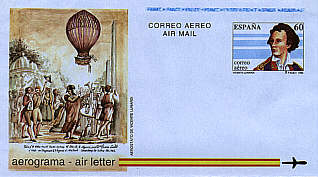August 8, 1709
first model hot air balloon built by Bartholomeu de Gusmao
Portuguese Jesuit pater, Bartolomeu Laurenço de Gusmão (1685-1724), is said to have demonstrated models of hot air balloons on August 8th, 1709 in Lisbonne in front of an important gathering headed by the Portuguese King John V.
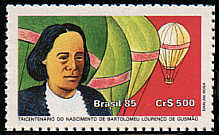

![]()
June 5, 1783
first public ascension of an unmanned paper balloon of brothers Montgolfiere
After a series of experiments with little and big balloons the brothers Joseph (1740-1810) and Etienne (1745-1799) Montgolfiere decided to make a first public display of their invention. They built a balloon which was made of linen covered with paper and had a diameter of 35 feet (11 metres). The balloon named "Ad Astra" ascended from a square in the middle of the Annonay and stayed up - to the amazement of the onlookers - for about ten minutes. It climbed to 6,000 feet and travelled nearly 2 km before it landed.
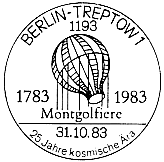
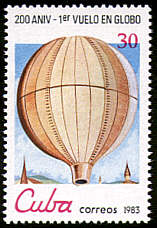

![]()
September 19, 1783
first balloon ascension with passengers
a new hot air balloon constructed by the Montgolfier brothers launched from the square in front of the Versailles Palace and landed after only 8 minutes in the Vaucresson forest, 3.2 km north of Versailles. The balloon named "Le Martial" was made of cotton and paper and had a diameter of 13 m. This balloon carried the first three passengers: a cock, a duck and a sheep which were placed in a cage under the balloon. King Louis XIV and Marie Antoinette observed this flight.
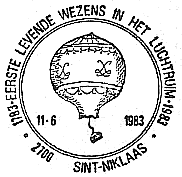


![]()
November 21, 1783
first manned hot air balloon flight
Pilatre de Rozier and the Marquis d'Arlandes launched from the grounds of the Chateau la Muette in the Bois de Boulogne near Paris at 1:54 pm in a Montgolfier balloon, a blue sphere decorated with the golden face of the sun god Apollo. The first manned flight lasted 20 minutes and covered about 5 miles (about 9 km) at an altitude of 330 feet (100 meters). The balloon landed at Butte-aux-Cailles which is close to present-day traffic centre Place d'Italie.
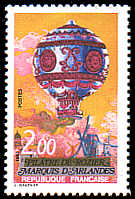
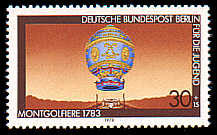


![]()
November 25, 1783
first flight of a small unmanned balloon in England
Count Francesco Zambeccari, together with fellow Italian Michael Biaggini, an artificial flower maker, succeeded in launching a model balloon from Biaggini's roof in London's Cheapside.
![]()
December 1, 1783
first manned gas balloon flight
Jacques A. C. Charles and Prof. Noel Robert launched a gas balloon from the Tuileries Gardens in Paris and touched down 27 miles (43 kilometers) away – near Nesles-la-Vallee (after 2,5 hours)
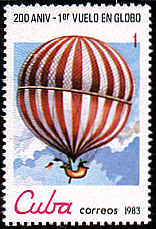
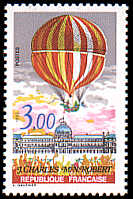


![]()
January 14, 1784
first unmanned balloon ascension in Austria
a hot air balloon, built by Alois von Widmannstetter, a book printer from Graz, launched three times ca. 200 m high from a garden in Vienna. Many spectators observed the ascensions
![]()
January 19, 1784
first balloon flight of a Belgian
Belgian Prince Charles de Ligne launched with
his balloon in Lyon (France)

![]()
January 22, 1784
first unmanned balloon flight in Germany
launch of an unmanned hot air balloon built by the german
Benedictine monk, astronomer and physicist professor Ulrich Schiegg (1752-1810)

![]()
March 2, 1784
first balloon flight of Jean Pierre Blanchard
the Frenchman Jean Pierre Blanchard (1753-1809) made his initial flight with self built balloon from the Marsfields in Paris a few weeks after the Montgolfier success. From that time on he traveled all over Europe giving demonstration flights. He was the first to make ascensions in Germany, Poland, the Netherlands, USA. Altogether he made 59 ascensions.
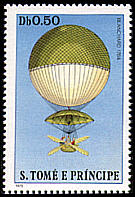
![]()
March 13, 1784
first balloon ascent in Italy
made in Moncucco (Brugherio) near Milano by Paolo Andreani and the
Gerli brothers (Carlo and Agostino)


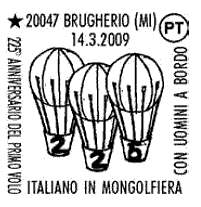
![]()
June 24, 1784
first ascension of tethered balloon in North America
Inventor Peter Carnes built a tethered hot air balloon which ascended in Bladensburg. A 13-year-old boy, Edward Warren from Baltimore, is said to have been sent aloft in this balloon that was to small to carry its designer.
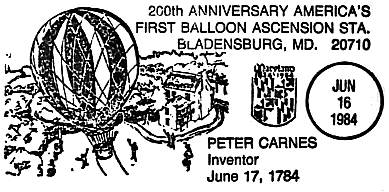
![]()
July 6, 1784
first balloon flight in Austria
Johann Georg Stuwer (1732-1802) launched with his great balloon (1,120 kg) from Prater in Vienna. Over 15,000 persons were present to see the launch.
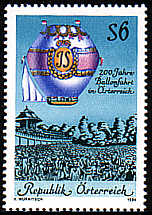
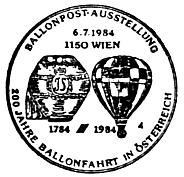

![]()
August 27, 1784
first balloon ascent on British soil
Mr. Tytler (a Scotchman?) launched with his hot air balloon (without the furnace)
from Comely Garden, Edinburgh, and descended on the road to Restalrig, about half a mile from the place
where he rose, to the great satisfaction of those spectators who were present.
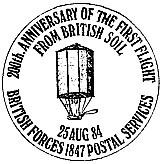
![]()
September 15, 1784
first balloon flight in England
Italian balloonist Vincenzo Lunardi (1759-1806, born in Lucca), Secretary to the
Neapolitan Ambassador, flew in a hydrogen balloon from the area of the
Honourable Artillery Company near Moorfields in London (he took a cat,
dog, pigeon and a bottle of wine with him) and landed at North Mimms after
his cat became cold (after 1 hour 40 min and 20 km) but than continued
his flight to land at Long Mead Hertfordshire after flying 24 miles.
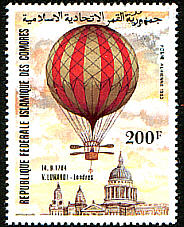
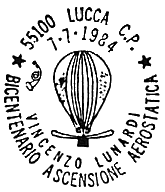
![]()
October 4, 1784
first balloon flight by an Englishman
the "Father of English Ballooning", James Sadler (1751 - 1828), made his first ascent from Oxford, his home town,
using a hot air balloon.
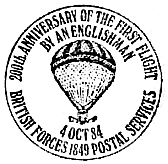
![]()
1785
second balloon flight of Lunardi in England
Lunardi made twelve ascents in England up to September 19, 1786, and later made ascents in Italy, Spain, and Portugal.
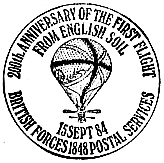
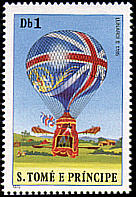
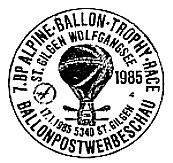
![]()
January 7, 1785
first balloon crossing of the English Channel
Jean-Pierre Blanchard (1753-1809) und Dr. John Jeffries
(USA) launched in England und landed in France after 2,5 hours
(first air mail was flown)
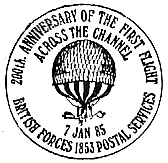
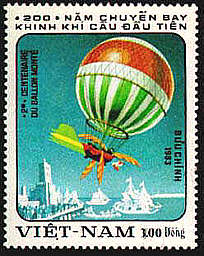
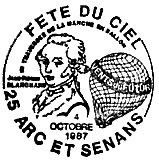
![]()
January 19, 1785
first manned balloon flight in Ireland
Irishman Richard Crosbie (1755-1800, born in Wicklow) launched at 2:30 p.m. from an exhibition area at Rangelagh Gardens in Dublin his "Grand Air Balloon and Flying Barge" in which he intended to cross the Irish Sea. The balloon was beautifully ornamented with paintings of Minerva and Mercury supporting the Arms of Ireland and emblematic figures of the winds. More than 35,000 people had gathered here to view the historical ascent. Due to early darkness Crosbie decided to break his attempt to cross the Irish Sea and he landed at Clontarf. Before this flight Crosbie experimented with various balloons and released several carrying various animals as passengers. Later he made some further attemps to cross Irish Sea but without success.
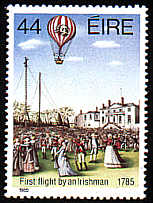
![]()
June 15, 1785
first balloon accident
Pilâtre de Rozier (1756-1785) built a new
balloon type as combination of both known types (gas and hot air balloons).
The result was first called a Charlo-Montgolfière, but later Rozière.
The hydrogen envelope was located above a cylindrical hot air balloon.
He wanted to cross the English Channel in this balloon.
During six months de Rozier and his assistant Pierre Jules Romain waited at Boulogne-sur-Mer (France)
for suitable weather to cross the Channel. Early in the morning of June 15, 1785, they finally
launched, but the balloon drifted towards the sea. Suddenly the wind was turning, they came back over land,
and then it happened - a mere 30 minutes after take-off. It came to a fire in the upper part of the balloon, and
it crashed on the ground. This attempt claimed the first two lives in the history of aviation.
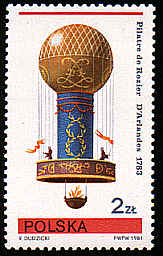
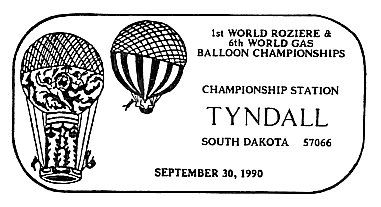
![]()
October 3, 1785
first manned balloon flight in Germany
Jean-Pierre Blanchard (1753-1809) launched in Frankfurt/Main
![]()
May 14, 1790
first balloon flight by a Pole
The Polish count Jan Potocki and his Turkish butler Abrahim flew with Jean-Pierre Blanchard (1753-1809)
in his balloon from Warsaw.
The first flight of Jean-Pierre Blanhard in Poland took place on Mai 10th, 1789. He flew from Warsaw to
Bialoleka.
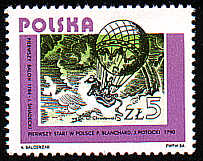
![]()
August 12, 1792
Lunardi's balloon launch in Madrid
Italian Vincenzo Lunardi launched in Madrid (Spain)
![]()
January 9, 1793
first manned balloon flight in North America
Jean-Pierre Blanchard (1753-1809) ascended from the yard of the Old Walnut Street Prison
in Philadelphia at 10:09 am and landed after 46 minutes in Gloucester County (near Deptford), New Jersey.
He flew 15 miles. George Washington was present to see the balloon launch and Blanchard carried a letter of passage
from President Washington, which stated that all citizens of the United States receive and aid Blanchard with the
humanity and good will, which would render honor to their country.
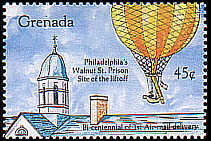
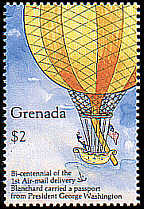
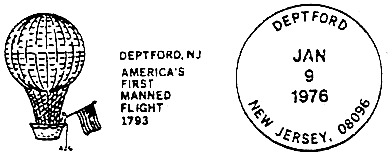
![]()
© Markus Wydera - e-mail: mwydera@gmx.de
last modified

